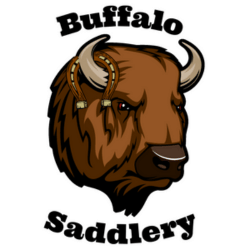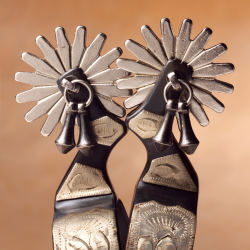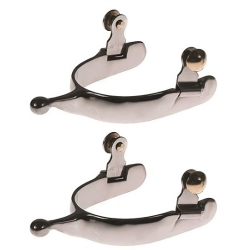English riding is a discipline that requires precision, control, and proper equipment. One essential piece of equipment often utilized in English riding is the breast collar. Whether you're a seasoned rider or just starting out, understanding and using a breast collar correctly is crucial for the comfort and safety of both you and your horse.
In this blog post, we will delve into the world of breast collars for English riding horses. We will explore the different types of breast collars available, including the hunting breastplate, the five-point breastplate, and the eventing breastplate. Understanding the unique features and benefits of each type will help you choose the right one for your horse's specific needs.
Proper fitting is paramount when it comes to using a breast collar. We will guide you through the process of taking accurate measurements, adjusting the straps correctly, and checking the fit to ensure maximum comfort and effectiveness. By following these steps, you can prevent discomfort, chafing, and potential injuries caused by an ill-fitting breast collar.
Maintenance and care are also crucial to prolonging the lifespan of your horse's breast collar. We will discuss the importance of regular cleaning, inspecting for wear and tear, and storing the breast collar properly when not in use. Taking these simple steps will help maintain the integrity of your equipment and provide a safe and reliable riding experience.
Lastly, we will highlight some common mistakes to avoid when using a breast collar. This includes incorrect fitting and adjustment, neglecting regular cleaning and maintenance, and misusing or overusing the breast collar. By being aware of these pitfalls, you can ensure the longevity and effectiveness of your breast collar.
Understanding and using a breast collar correctly is an essential aspect of English riding. By gaining knowledge about the different types of breast collars, properly fitting them to your horse, and maintaining them regularly, you can enhance the comfort, control, and overall riding experience for both you and your equine partner. So, let's dive into the world of breast collars and set you on the path to success in your English riding endeavors.
Introduction: What is a Breast Collar and Why is it used in English Riding?
A breast collar, also known as a breastplate, is a piece of equipment used in English riding to help secure the saddle in place and provide additional stability to the rider. It is typically made of leather or synthetic materials and is designed to fit around the chest and shoulders of the horse.
The primary purpose of a breast collar is to prevent the saddle from sliding backward or shifting sideways during riding. This is especially important when performing activities that require quick turns, jumps, or galloping, as it helps maintain the rider's balance and prevents the saddle from slipping too far back on the horse's back.
In addition to its functional aspect, a breast collar also adds a touch of aesthetic appeal to the horse's tack. Many riders choose breast collars that match their saddle or bridle, enhancing the overall look of their riding ensemble.
Using a breast collar not only provides stability and security but also helps distribute the weight of the rider more evenly across the horse's chest and shoulders. This can help alleviate pressure on the horse's back, making it more comfortable for them to carry the rider's weight.
Breast collars are commonly used in various English riding disciplines, including dressage, show jumping, eventing, and cross-country riding. They are particularly beneficial for horses with conformational challenges, such as those with high withers or narrow chests, as they can help keep the saddle in place and prevent it from slipping forward.
Overall, a breast collar is a valuable piece of equipment in English riding that serves both functional and aesthetic purposes. By providing stability, weight distribution, and preventing saddle slippage, it enhances the safety, comfort, and performance of both the horse and the rider.
Different Types of Breast Collars for English Riding Horses
When it comes to choosing a breast collar for your English riding horse, there are several different types available on the market. Each type of breast collar has its own unique design and features, catering to specific riding disciplines and individual horse conformation. Let's explore the most common types of breast collars used in English riding:
1. The Hunting Breastplate
The hunting breastplate, also known as a standing martingale, is a popular choice for riders participating in fox hunting or other hunting-related activities. It consists of a central strap that runs vertically from the girth between the horse's front legs, up the chest, and divides into two straps that attach to the D-rings on either side of the saddle. The purpose of the hunting breastplate is to prevent the horse from raising their head too high or throwing it back excessively, which can be dangerous when navigating uneven terrain or jumping obstacles.
2. The Five-Point Breastplate
The five-point breastplate is a more advanced and secure type of breast collar commonly used in eventing, show jumping, and cross-country riding. It is designed to provide maximum stability and prevent the saddle from shifting during high-intensity activities. The five-point breastplate consists of five attachment points: two straps attached to the D-rings on the saddle, two straps that pass through the horse's front legs and attach to the girth, and a center strap that runs vertically from the girth up the chest. This configuration ensures that the breastplate is securely anchored to multiple points on the horse's body, minimizing the risk of saddle movement.
3. The Eventing Breastplate
The eventing breastplate is specifically designed for the demanding sport of eventing, which combines dressage, cross-country, and show jumping. This type of breastplate offers a combination of the features found in the hunting breastplate and the five-point breastplate. It typically consists of a central strap that attaches to the girth between the horse's front legs and divides into two straps that connect to the D-rings on the saddle. Additionally, it may have an attachment point that passes through the horse's front legs and attaches to the girth, providing extra stability during cross-country jumps.
Choosing the Right Type for Your Horse
When selecting a breast collar for your English riding horse, consider your riding discipline, the horse's conformation, and your specific needs. If you participate in fox hunting or require additional control over head position, a hunting breastplate may be suitable. For high-intensity activities and maximum stability, a five-point breastplate or eventing breastplate might be the best option.
Remember to ensure that the breast collar fits your horse properly, allowing freedom of movement while effectively securing the saddle. Consulting with a knowledgeable equestrian professional or saddle fitter can help you make an informed decision and find the right type of breast collar for your horse's comfort and safety.
How to Properly Fit a Breast Collar on Your Horse
Properly fitting a breast collar on your horse is essential to ensure their comfort and safety during English riding activities. A well-fitted breast collar will effectively secure the saddle and distribute the weight evenly, preventing discomfort, chafing, and potential injuries. Follow these steps to ensure a proper fit for your horse's breast collar:
1. Taking the Right Measurements
Before purchasing a breast collar, you need to measure your horse accurately. Use a soft measuring tape to measure the circumference of your horse's chest, starting from the center of their chest and looping around their shoulders. Take note of the measurement in inches or centimeters.
2. Adjusting the Straps
Once you have acquired a breast collar, it's time to adjust the straps to fit your horse properly. Begin by attaching the breast collar to the saddle D-rings, ensuring that the center strap is in the correct position, running vertically from the girth between the horse's front legs.
Next, adjust the shoulder straps. They should be long enough to allow freedom of movement for the horse's shoulders but not so loose that the breast collar hangs too low or interferes with their leg movement. The shoulder straps should be snug against the horse's chest without causing any discomfort or restricting breathing.
Lastly, check the girth strap. It should be adjusted so that it fits snugly around the horse's girth, preventing the breast collar from sliding backward or shifting sideways. Ensure that there is enough room for the horse to move comfortably and breathe without restriction.
3. Checking the Fit
With the breast collar properly adjusted, it's essential to check the fit while the horse is standing and in motion. Look for the following indicators to ensure a proper fit:
- The breast collar should sit in the center of the horse's chest, without pulling to one side or hanging too low.
- There should be enough clearance between the breast collar and the horse's throat latch to prevent any pressure or discomfort.
- The horse's shoulders should have ample room to move freely without any restriction from the breast collar.
- When the horse moves, the breast collar should stay in place and not slide backward or shift sideways.
If you notice any issues with the fit, readjust the straps accordingly. It's important to regularly check the fit of the breast collar, as the horse's body shape can change over time due to muscle development or weight fluctuations.
By properly fitting the breast collar on your horse, you ensure their comfort, prevent saddle slippage, and promote optimal performance during English riding activities. Remember to regularly check the fit and make adjustments as needed to maintain a secure and comfortable fit for your horse.
Maintenance and Care for Your Horse's Breast Collar
Taking proper care of your horse's breast collar is essential to ensure its longevity, functionality, and the safety of both you and your horse. Regular maintenance and care will help prevent premature wear and tear, keep the breast collar clean and hygienic, and maintain its overall effectiveness. Follow these guidelines for maintaining and caring for your horse's breast collar:
1. Cleaning the Breast Collar
Regularly cleaning your horse's breast collar is important to remove dirt, sweat, and grime that can accumulate over time. Here's how to clean your horse's breast collar:
- Start by removing any excess dirt and debris using a soft brush or cloth.
- Fill a bucket with warm water and add a mild soap or leather cleaner specifically designed for equestrian equipment.
- Dip a clean sponge or cloth into the soapy water and gently scrub the breast collar, paying attention to areas that may be particularly dirty or stained.
- Rinse the breast collar thoroughly with clean water to remove any soap residue.
- Pat dry with a clean towel or hang it in a well-ventilated area to air dry completely.
Avoid using harsh chemicals or abrasive cleaners that can damage the leather or synthetic materials of the breast collar. Additionally, do not soak the breast collar in water or expose it to excessive heat, as this can cause distortion or weakening of the materials.
2. Inspecting for Wear and Tear
Regularly inspecting your horse's breast collar for wear and tear is crucial to identify any potential issues before they become more significant problems. Here's what to look for during your inspection:
- Check the stitching: Examine the stitching on the breast collar for any signs of fraying, loose threads, or broken stitches. If you notice any damage, it's essential to repair it promptly to maintain the integrity of the breast collar.
- Inspect the hardware: Check the buckles, snaps, and other hardware for any signs of rust, corrosion, or weakening. Replace any damaged or worn-out hardware to ensure the breast collar remains secure and functional.
- Assess the overall condition: Look for any cracks, tears, or significant wear on the leather or synthetic material of the breast collar. If you notice any severe damage, it may be necessary to replace the breast collar to maintain safety and functionality.
3. Storing Your Horse's Breast Collar
Proper storage is essential to keep your horse's breast collar in good condition when not in use. Follow these tips for storing the breast collar:
- Clean and dry the breast collar thoroughly before storing it to prevent mold or mildew growth.
- Store the breast collar in a clean, dry area away from direct sunlight, excessive heat, or extreme cold.
- Avoid folding or creasing the breast collar, as this can cause permanent damage. Instead, hang it on a sturdy rack or lay it flat in a clean, dust-free storage box or bag.
By regularly cleaning, inspecting, and properly storing your horse's breast collar, you can extend its lifespan and ensure its functionality and safety. Remember to address any repairs or replacements promptly to maintain the integrity of the breast collar and provide a reliable and secure riding experience.
Common Mistakes to Avoid When Using a Breast Collar
While using a breast collar can provide numerous benefits for your horse's comfort and your riding experience, there are some common mistakes that riders make when using this equipment. To ensure the safety and effectiveness of your horse's breast collar, it's important to be aware of these common mistakes and avoid them. Here are some common mistakes to avoid when using a breast collar:
1. Incorrect Fitting and Adjustment
One of the most prevalent mistakes is improperly fitting or adjusting the breast collar. A poorly fitted breast collar can cause discomfort, restrict movement, and even lead to injuries. Ensure that you take accurate measurements and adjust the straps accordingly to achieve a proper fit. Avoid over-tightening or leaving the breast collar too loose, as both can compromise its effectiveness.
2. Neglect of Regular Cleaning and Maintenance
Another common mistake is neglecting regular cleaning and maintenance of the breast collar. Dirt, sweat, and grime can accumulate over time, leading to deterioration of the materials and potential discomfort for your horse. Make it a habit to clean the breast collar regularly, following the proper cleaning guidelines mentioned earlier. Additionally, inspect the breast collar for any signs of wear and tear and address them promptly to prevent further damage.
3. Misuse or Overuse of the Breast Collar
Using the breast collar incorrectly or excessively can also be detrimental. Some riders may rely too heavily on the breast collar as a solution for saddle fit issues or other problems. It's important to address the root cause of any issues rather than relying solely on the breast collar. Additionally, using the breast collar excessively, such as leaving it on for extended periods of time when not riding, can cause discomfort and potentially lead to rub marks or sores.
4. Ineffective Saddle Fit
A common mistake is using a breast collar as a band-aid solution for an ill-fitting saddle. While a breast collar can help secure the saddle, it is not a substitute for proper saddle fit. Ensure that your saddle fits your horse correctly, with sufficient clearance and appropriate padding, before relying solely on the breast collar for stability.
5. Ignoring Your Horse's Comfort and Feedback
Lastly, it's crucial not to ignore your horse's comfort and feedback when using a breast collar. Pay attention to their body language, movement, and behavior while riding. If your horse shows signs of discomfort, such as excessive sweating, reluctance to move forward, or resistance, it may indicate an issue with the breast collar. Take the time to reassess the fit and adjust as necessary to ensure your horse's comfort and well-being.
By being aware of these common mistakes and actively avoiding them, you can ensure the safe and effective use of a breast collar for your horse. Remember to prioritize proper fitting and adjustment, regular cleaning and maintenance, and addressing any saddle fit issues. By doing so, you can provide a comfortable and secure riding experience for both you and your horse.












































